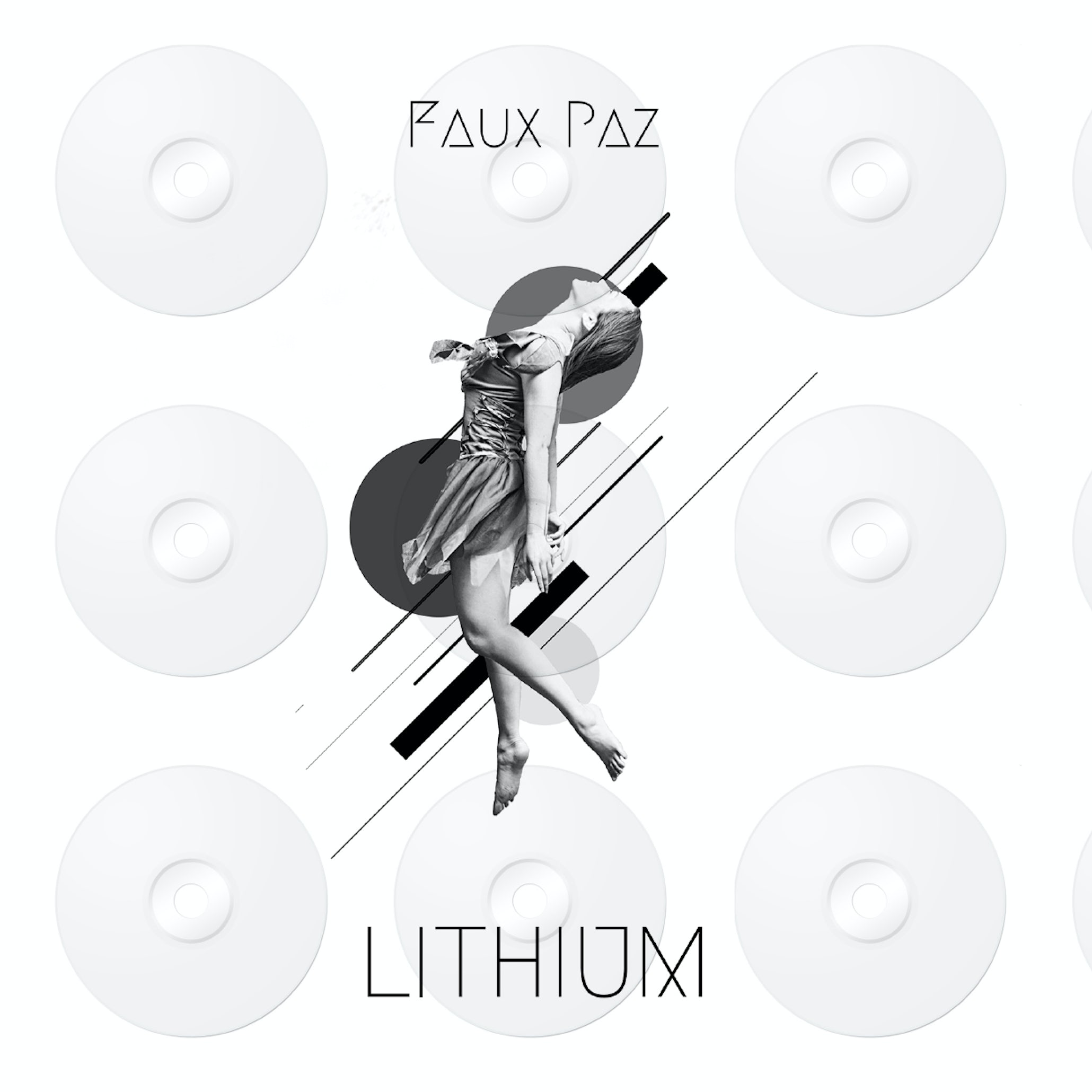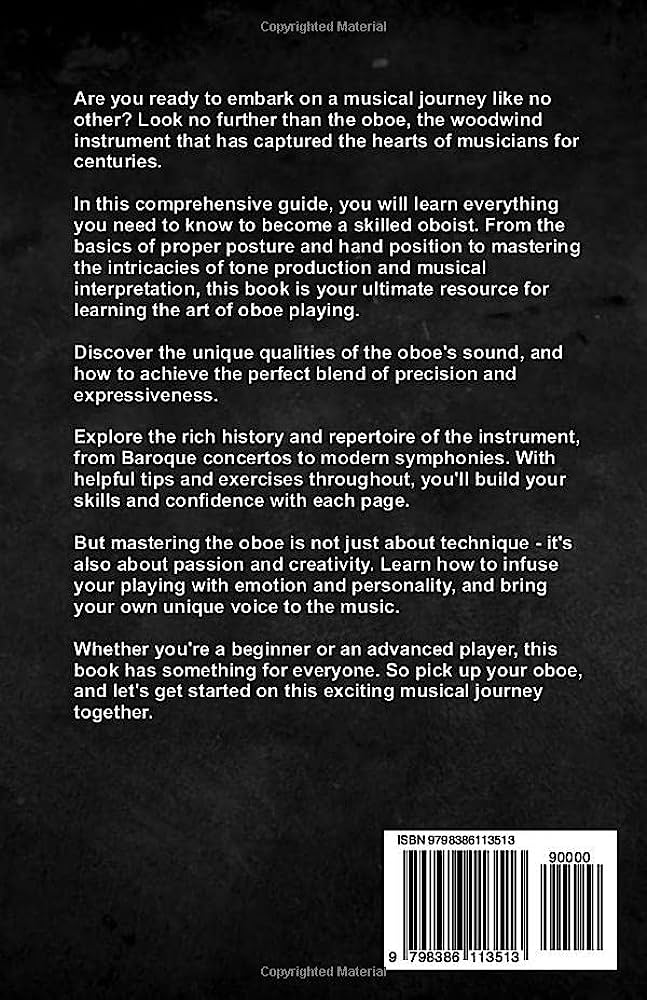Modernism music is an artistic movement that emerged in the late 19th and early 20th centuries, characterized by experimentation, innovation, and a move away from traditional harmonic structures and tonality. Modernism music developed as a response to the cultural, social, and political changes that occurred during this period.
Composers sought to break free from the constraints of traditional musical forms and explore new ways of expressing themselves. One of the key features of modernism music was the use of dissonance and unconventional harmonies, which challenged traditional notions of beauty and created a sense of tension and unease.
Composers also experimented with rhythm and tempo, often using irregular patterns and complex meters. In addition, modernism music embraced technology and incorporated electronic sounds and instruments into compositions. Composers such as igor stravinsky, arnold schoenberg, and claude debussy were at the forefront of this movement, pushing the boundaries of traditional music and paving the way for the avant-garde music of the 20th century.

Credit: 99designs.com
The Roots Of Modernism Music
Modernism music is a genre that emerged in the late 19th and early 20th centuries, breaking away from traditional musical conventions and embracing innovative and experimental techniques. The roots of modernism music can be traced back to classical music and folk traditions, which had a significant influence on shaping this revolutionary genre.
In this section, we will explore the impact of classical music and folk traditions on modernism music.
Influence Of Classical Music On Modernism Music
- Classical music laid the foundation for modernism music by inspiring composers to break free from the constraints of tonality and traditional musical structures.
- Composers like igor stravinsky and arnold schoenberg embraced dissonance and unconventional harmony, challenging the harmonic conventions of classical music.
- The use of complex rhythmic patterns and unconventional time signatures in modernism music can be traced back to the innovations in rhythm employed by composers like ludwig van beethoven and johann sebastian bach.
- The concept of program music, which is prevalent in modernism music, can be attributed to composers like franz liszt and richard strauss, who sought to depict specific narratives or sensory experiences through their compositions.
Exploring The Impact Of Folk Traditions On Modernism Music
- Folk traditions played a crucial role in influencing the melody, rhythm, and instrumentation of modernism music.
- Composers like béla bartók and ralph vaughan williams extensively studied and incorporated folk melodies into their works, enriching modernism music with diverse and unique musical expressions.
- The use of folk-inspired modal scales and unconventional harmonies in modernism music can be attributed to the exploration of folk traditions by composers like zoltán kodály and jean sibelius.
- The employment of folk instruments, such as the balalaika and bagpipes, in modernism music showcases the influence of folk traditions on orchestrational choices.
The roots of modernism music are deeply intertwined with classical music and folk traditions. The influence of classical music can be seen in the breaking of tonal conventions and the exploration of rhythm, while folk traditions contributed to the melodic and harmonic innovations in modernism music.
By embracing these influences, modernist composers created a genre that challenged traditional musical norms and paved the way for further experimentation in the world of music.
The Birth Of Modernism Music
The historical context of modernism music’s emergence:
- The late 19th and early 20th centuries marked a period of profound cultural and artistic transformation, known as modernism. Music was no exception to this sweeping wave of change.
- Traditional musical forms and structures began to be challenged and reimagined, paving the way for the birth of modernism music.
- The chaotic and tumultuous events of the time, such as world war i and the breakdown of societal norms, set the stage for artists to question established musical traditions and experiment with new sounds and techniques.
Examining the key figures in modernism music’s beginnings:
- Arnold schoenberg: A pivotal figure in the development of modernism music, schoenberg pioneered atonal and twelve-tone composition techniques. His groundbreaking piece, “pierrot lunaire,” showcased the use of speech-like vocals and dissonant harmonies.
- Igor stravinsky: Known for his revolutionary ballets, stravinsky pushed the boundaries of rhythm, tonality, and orchestration. His compositions, such as “the rite of spring,” shocked audiences with their rhythmic complexities and novel arrangements.
- Claude debussy: Debussy’s impressionistic compositions broke away from the strict confines of tonality and delved into the realm of harmonies and textures. His work, like “prelude to the afternoon of a faun,” incorporated unconventional scales and form to evoke imagery and emotions.
- Béla bartók: Bartók’s exploration of folk music traditions and incorporation of non-western scales and rhythms contributed to the rise of modernism. His compositions, such as “music for strings, percussion, and celeste,” showcased innovative techniques and blurred the boundaries between genres.
Modernism music emerged as a radical departure from the familiar, embracing experimentation, dissonance, and unconventional structures. These pioneering figures challenged the status quo, redefining what music could be and inspiring future generations of composers to push the boundaries even further.
Characteristics Of Modernism Music
The Experimental Nature Of Modernism Music
Modernism music refers to a period in music history that emerged in the late 19th and early 20th centuries. During this time, composers pushed the boundaries of traditional musical composition and experimented with new forms, techniques, and ideas. Here are some key characteristics of modernism music:
- Dissonance and unconventional harmonies:
- Modernism music embraced dissonance, which refers to the tension that arises from the combination of certain tones or chords.
- Composers incorporated unconventional harmonies and chord progressions that challenged established tonal norms.
- This use of dissonance and unconventional harmonies created a sense of unpredictability and complexity in the music.
- Exploration of new sounds and timbres:
- Modernism composers sought to explore new sounds and timbres by utilizing unconventional instruments, techniques, and vocal styles.
- They experimented with extended techniques, such as playing “inside the piano” or using non-traditional playing methods to produce unique sounds.
- Composers were also interested in exploring the sonic possibilities of electronic instruments and recording techniques.
- Emphasis on abstract and atonal composition:
- Modernism music often moved away from traditional tonal and harmonic structures, adopting more abstract and atonal approaches.
- Atonality refers to the absence of a tonal center or key signature, allowing for greater freedom and experimentation in composition.
- Composers like arnold schoenberg and igor stravinsky pioneered atonal and serial techniques, which involved using predetermined sets of pitches and rhythms.
- Experimentation with form and structure:
- Modernism music challenged conventional musical forms and structures, incorporating elements of improvisation, chance, and indeterminacy.
- Composers embraced unconventional forms like suites, variations, and collages, breaking away from traditional symphonic structures.
- The exploration of new forms allowed for greater expression of individual creativity and artistic vision.
- Incorporation of world music and folk influences:
- Modernist composers drew inspiration from the music of different cultures and incorporated elements of world music and folk traditions.
- This cross-cultural influence added diversity and richness to modernism music, as composers explored rhythmic patterns, melodies, and instrumentation from various regions.
Modernism music revolutionized the way we perceive and experience music. Its experimental nature, exploration of dissonance and unconventional harmonies, and the incorporation of new sounds and timbres made it a transformative period in music history. By challenging traditional forms and structures, modernist composers opened up new avenues for artistic expression and paved the way for future generations of musicians to explore boundless creative possibilities.
Modernism Music Movements
Modernism in music was a significant artistic movement that emerged in the late 19th and early 20th centuries. Challenging traditional norms and breaking free from conventional structures, modernism music sought to explore new territories in sound, form, and expression. Two prominent movements within modernism music were impressionism and expressionism, both of which made indelible contributions to the evolution of music during this period.
Impressionism And Its Influence On Modernism Music
Impressionism, originating in the visual arts, found its way into music, resulting in a revolutionary approach that emphasized atmosphere, color, and suggestion. Here are some key points to understand the influence of impressionism on modernism music:
- Breaking free from traditional harmonies: Impressionist composers such as claude debussy embraced unconventional harmonic progressions and tonal ambiguity. They sought to create delicate and evocative atmospheres through sound, challenging the rigid tonal structures of the past.
- Symbolism and suggestive elements: Impressionist music aimed to evoke emotions and create vivid imagery through suggestive elements. Composers utilized techniques like whole-tone scales, parallel chords, and shimmering textures to invoke a sense of fleeting beauty and ethereal landscapes.
- Blurring the lines between genres: Impressionism in music blurred the boundaries between genres, integrating elements from folk music, jazz, and eastern musical traditions. This fusion of diverse influences brought forth a new sonic palette that defied classical conventions.
- Focus on texture and timbre: Impressionist composers emphasized the importance of texture and timbre, often creating vibrant orchestral colors and delicate layers of sound. The music conveyed a sensory experience by blending different instrumental timbres and exploring unique combinations.
Expressionism’S Impact On Modernism Music
Expressionism emerged as a response to the industrialization and societal turmoil of the early 20th century, seeking to express intense emotions and subjective experiences. Its impact on modernism music was profound and marked by the following key points:
- Emotional intensity and introspection: Expressionist composers aimed to express raw and intense emotions through their music. They delved into the depths of human psyche, often exploring themes of angst, alienation, and inner turmoil. This approach brought a new level of emotional depth and personal expression to modernist compositions.
- Dissonance and distortion: Expressionist music embraced dissonance and explored unconventional harmonies to create a sense of unease and tension. Composers utilized extreme chromaticism, dissonant intervals, and unconventional scales to convey the inner turmoil and fragmented realities characteristic of the expressionist movement.
- Extended techniques and unconventional instrumentation: Expressionist music pushed the boundaries by employing extended techniques and unconventional means of producing sound. Composers experimented with new instrumental techniques, such as playing inside the piano or using non-traditional playing methods, to achieve unique and evocative sounds.
- Rejection of traditional forms: Expressionist composers rejected traditional musical forms and structures, favoring free experimentation and improvisation. The emphasis was on conveying emotions and subjective experiences rather than adhering to established compositional norms.
As modernism music progressed, these movements continued to shape and inspire subsequent generations of composers. Impressionism and expressionism opened up new avenues of musical expression, broadening the horizons of what was deemed possible in the realm of sound. These movements exemplified the spirit of innovation and experimentation that defined modernism in music and continue to resonate with audiences today.
Modernism Music In Different Countries
Modernism music is a diverse and ever-evolving genre that has taken shape in various countries around the world. From france to germany, the development and evolution of modernism music have left a lasting impact on the cultural landscape of each nation.
Let’s take a closer look at how modernism music has unfolded in these two countries.
The Development Of Modernism Music In France
- A reaction against romanticism: Modernism music in france can be traced back to the late 19th century when composers like debussy and ravel emerged as key figures of the movement. They sought to break free from the traditional constraints of romanticism and explore new avenues of musical expression.
- Impressionism influence: Inspired by the french impressionist painters, modernism music in france embraced a more fluid and atmospheric approach. It prioritized unconventional harmonic structures, ethereal melodies, and the use of rich tonal colors to evoke a sense of mood and imagery.
- Avant-garde experimentation: The early 20th century witnessed the rise of avant-garde composers, such as erik satie and olivier messiaen. These artists challenged the boundaries of traditional composition, pushing the limits of musical language and embracing unconventional techniques, including extended harmonies and complex rhythmic patterns.
- Incorporating folk elements: French modernist composers also drew inspiration from folk music, infusing elements of regional music traditions into their compositions. This incorporation of folk elements added a distinct flavor to french modernism music, reflecting the cultural diversity of the country.
Exploring The Evolution Of Modernism Music In Germany
- A quest for expression: German modernism music emerged as a response to the rigid structure of traditional classical music. Composers such as arnold schoenberg and alban berg sought to explore new forms of expression, defying tonal limitations and embracing atonality.
- The second viennese school: The development of the second viennese school, led by schoenberg, berg, and anton webern, played a significant role in shaping german modernism music. This school emphasized the twelve-tone technique, which involved the systematic use of all twelve pitches of the chromatic scale, offering a radical departure from traditional tonality.
- Expressionism and emotion: German modernism music was deeply influenced by the expressionist movement in art and literature. Composers sought to convey deep emotional experiences, often exploring dark and intense themes through their music. The use of dissonance and unconventional harmonies became integral to this expressive approach.
- Electronic and experimental sounds: In the mid-20th century, germany became a hub for electronic and experimental music. Pioneers like karlheinz stockhausen and kraftwerk pushed the boundaries of sound manipulation and synthesis, revolutionizing music composition and paving the way for genres like electronic music and industrial music.
Modernism music in france and germany showcases the distinct cultural, historical, and artistic influences that have shaped these musical traditions. While french modernism music embraced impressionism and folk elements, german modernism music delved into atonality, expressionism, and the avant-garde. Both countries have left an indelible mark on the evolution of modernism music, contributing to its ongoing legacy as a dynamic and boundary-pushing genre.
Modernism Music And Technology
In the realm of modernism music, technology has played a significant role in shaping the sound and possibilities of compositions. From the emergence of electronic instruments to the use of audio recording, advancements in technology have paved the way for unprecedented innovation and experimentation.
In this section, we will delve into two key aspects of modernism music and technology: the role of electronic instruments and the utilization of audio recording.
The Role Of Electronic Instruments In Modernism Music
- Electronic instruments revolutionized the landscape of modernism music by introducing new sounds and expanding the range of possibilities for composers.
- Key points:
- Synthesizers: Synthesizers allowed composers to create unique and customizable sounds, breaking away from the traditional limitations of acoustic instruments.
- Electronic keyboards: The advent of electronic keyboards provided composers with a versatile and portable option for composing and performing modernist compositions.
- Electronic manipulation: Electronic instruments offered the ability to manipulate sound in ways that were previously unimaginable, leading to the exploration of unconventional and abstract musical ideas.
- Sampling: The ability to sample sounds opened up a whole new world of possibilities, allowing composers to incorporate everyday sounds, recordings, and even snippets from other musical works into their compositions.
Examining The Use Of Audio Recording In Modernism Music
- Audio recording technology played a crucial role in the development and dissemination of modernism music, allowing for preservation, experimentation, and exploration.
- Key points:
- Preservation and documentation: Audio recording allowed composers to capture their compositions, preserving them for future generations to study and analyze.
- Experimentation and manipulation: With the ability to record and manipulate sound, composers could experiment with layering, looping, and altering recordings, pushing the boundaries of traditional musical composition.
- Sound collages: Audio recording enabled composers to create intricate sound collages by combining various recorded elements, blurring the line between music and everyday sounds.
- Remote collaboration: The ability to share recordings remotely facilitated collaborations between artists in different locations, fostering the exchange of ideas and the creation of unique musical works.
As modernism music continues to evolve, technology will undoubtedly continue to shape its trajectory. The interplay between electronic instruments, audio recording technology, and the creative minds of composers pushes the boundaries of what is possible in the realm of music.
By embracing technology, modernist musicians are able to forge new paths, challenge conventions, and create captivating sonic experiences beyond the realm of imagination.
Criticisms And Controversies Surrounding Modernism Music
Modernism music, with its avant-garde and experimental elements, has always been a subject of controversy and critique. While some view it as a revolutionary movement that pushed the boundaries of traditional music, others argue that it is inaccessible, elitist, and lacks mass appeal.
In this section, we will explore the criticisms and controversies surrounding modernism music, focusing on the public reception and issues of accessibility and elitism.
The Public Reception Of Modernism Music
Modernism music has often faced mixed reactions from the public. While some listeners embrace and appreciate the innovative nature of the genre, others struggle to connect with its unconventional sounds. Here are some key points regarding the public reception of modernism music:
- Many members of the public find modernism music challenging and difficult to comprehend due to its departure from conventional melodic and harmonic structures.
- The emphasis on dissonance, complex rhythms, and unconventional instrumentation often leads to a lack of familiarity and accessibility for the average listener.
- Modernism music has a reputation for being intellectually demanding and requiring deep analysis to fully appreciate its intricacies.
- Critics argue that the abstract nature of modernism music can make it seem detached from human emotions, leading to a perceived lack of emotional connection for listeners.
Issues Of Accessibility And Elitism In Modernism Music
One of the main points of contention surrounding modernism music is its perceived elitism and lack of accessibility. Here are some key points to consider:
- The experimental nature of modernism music often alienates mainstream audiences, limiting its reach and popularity beyond niche circles.
- Critics argue that modernist composers and performers prioritize intellectual pursuits over creating music that appeals to a wide audience, further contributing to its exclusivity.
- The complexity and technical demands of modernism music often require a high level of musical training and understanding, making it inaccessible to those without formal music education.
- Some argue that the avant-garde nature of modernism music can create a divide between the elite cultural elite and the general public, perpetuating a sense of exclusivity and snobbery within the genre.
Modernism music undoubtedly sparks controversy and debates regarding its reception and accessibility. While it has its dedicated followers and proponents who value its innovation and intellectual depth, criticisms of inaccessibility and elitism persist. The future of modernism music hinges on bridging the gap between its experimental nature and creating a more inclusive space for all listeners to engage with its artistry.
Modernism Music’S Legacy And Influence
Modernism music, a paradigm shift in the world of music during the early 20th century, has had a profound and lasting influence on contemporary music genres. From challenging traditional harmonies and tonal systems to introducing new experimental techniques and sounds, modernism music paved the way for a revolution in musical expression.
Let’s explore the impact of modernism music on contemporary music genres and its lasting influence on avant-garde movements.
Exploring The Impact Of Modernism Music On Contemporary Music Genres
- Jazz: Modernism music played a significant role in the development of jazz, with its emphasis on improvisation and experimentation. The use of syncopated rhythms, dissonant harmonies, and unconventional chord progressions in modernism music influenced jazz musicians to push the boundaries of traditional musical structures.
- Rock: The influence of modernism music on rock can be seen through the experimentation with different instruments, unconventional song structures, and the incorporation of avant-garde elements. Artists like the beatles and pink floyd drew inspiration from modernism music, resulting in the evolution of rock as a genre.
- Electronic music: Modernism music’s exploration of new sounds and technology laid the foundation for the development of electronic music. The use of synthesizers, tape loops, and other innovative techniques in modernism music influenced electronic artists to create new and groundbreaking compositions.
- Experimental music: The avant-garde nature of modernism music led to the emergence of experimental music genres such as musique concrète and minimalism. These genres focused on unconventional methods of sound production, incorporating everyday sounds and creating unique sonic landscapes.
The Lasting Influence Of Modernism Music On Avant-Garde Movements
- Dadaism: Modernism music’s rejection of traditional forms and its emphasis on experimentation resonated with the ideals of the dada movement. Dada artists incorporated elements of modernism music into their performances, blurring the boundaries between disciplines and questioning societal norms.
- Surrealism: Surrealist artists drew inspiration from the dream-like qualities of modernism music, utilizing unconventional sounds and musical structures to create works that explored the subconscious mind. The influence of modernism music can be seen in the sound collages and unconventional compositions of surrealist artists.
- Fluxus: The fluxus movement, known for its interdisciplinary approach and emphasis on audience participation, was heavily influenced by modernism music. Fluxus performances often incorporated experimental music elements, blurring the line between composer and performer.
- Neo-avant-garde: Modernism music’s legacy continues to influence contemporary avant-garde movements, with artists adopting and expanding upon the experimental techniques and philosophies of the modernist era. The exploration of unconventional sounds, non-traditional instruments, and new compositional structures can be traced back to the influence of modernism music.
Modernism music’s legacy and influence on contemporary music genres and avant-garde movements cannot be overstated. Its experimentation with sound, rejection of traditional norms, and emphasis on personal expression continue to inspire and shape the musical landscape even today.
The Future Of Modernism Music
Modernism music has come a long way since its inception and continues to evolve and push boundaries in exciting and innovative ways. In this section, we will explore the future of modernism music and the various innovations and developments that have emerged in recent times.
Innovations And Developments In Modernism Music Today
- Fusion of genres: One of the most significant trends in modernism music is the fusion of different musical genres. Artists are blending elements from classical, jazz, electronic, and world music to create unique and captivating compositions. This blending of styles allows for experimentation and the creation of new sounds and textures.
- Use of technology: Technology has revolutionized modernism music, providing musicians with new tools and possibilities. The use of synthesizers, computer-based music production software, and digital instruments has allowed for the creation of complex and intricate compositions. This integration of technology into the creative process has opened up limitless possibilities for modernist musicians.
- Exploration of extended techniques: Modernism music has always pushed the boundaries of traditional musical techniques, and this trend continues today. Musicians are exploring extended techniques on traditional instruments, such as using unconventional playing techniques or incorporating non-traditional objects into their performances. These techniques add a layer of experimentation and avant-garde to modernism music.
- Incorporation of non-musical elements: Modernism music has expanded beyond the realm of sound and has started to incorporate non-musical elements into performances. This includes the use of multimedia, visual arts, dance, and even theater. This interdisciplinary approach adds depth and complexity to modernism music, creating immersive experiences for the audience.
- Embracing diversity and inclusivity: Modernism music is becoming more inclusive and diverse, with artists from different cultural backgrounds and perspectives bringing their own unique influences and experiences into the genre. This infusion of diverse voices has enriched modernism music, resulting in a more expansive and inclusive artistic landscape.
- Environmental and socio-political awareness: Many modernist musicians are using their music as a platform to address important social and environmental issues. They are using their compositions and performances to raise awareness, inspire change, and provoke thought. This socio-political awareness adds meaning and depth to modernism music, making it not only an artistic expression but also a voice for change.
Modernism music is alive and thriving, constantly evolving and reinventing itself. Through the fusion of genres, exploration of new techniques, and incorporation of non-musical elements, modernism music continues to push boundaries and challenge the status quo. With technology as its ally and a growing focus on diversity and socio-political issues, the future of modernism music is exciting and limitless.
Conclusion: The Enduring Significance Of Modernism Music
Modernism music has left an indelible mark on the musical landscape, challenging conventions and captivating audiences with its bold and innovative approach. As we reflect on its enduring significance, it becomes clear that modernism music continues to shape and inspire musicians to this day.
In this section, we will explore the key points that highlight the lasting impact and relevance of modernism music.
Embracing Experimentalism And Exploration
- Modernism music embraced experimentalism, pushing the boundaries of traditional musical forms and structures.
- Composers sought new sounds and techniques, using unconventional instruments and incorporating elements of noise and dissonance.
- This spirit of exploration paved the way for future genres and movements, inspiring an era of musical diversity and innovation.
Shattering Expectations And Challenging Conventions
- Modernism music shattered expectations by challenging established norms and conventions.
- Composers broke free from the constraints of tonality, embracing atonality and serialism.
- This departure from traditional harmony and melody allowed for a more expressive and emotionally charged musical language.
Influence On Contemporary Music
- The influence of modernism music can be seen in various contemporary genres.
- Elements such as irregular rhythms, unconventional instrumentation, and experimental techniques have found their place in genres like avant-garde, electronic, and post-rock.
- Modernism music laid the foundation for a more inclusive and diversified musical landscape, encouraging musicians to push boundaries and explore new possibilities.
Inspiring Intellectual Discourse
- Modernism music sparked intellectual discourse and critical dialogue about the nature and purpose of music.
- Composers and music scholars engaged in debates and discussions surrounding the aesthetics and philosophy of music.
- These conversations continue to shape our understanding and appreciation of music, fostering a deeper connection between artists, scholars, and audiences.
Celebrating Individualism And Expression
- Modernism music celebrated individualism and self-expression, allowing composers to freely explore their unique musical voices.
- Composers were encouraged to express their inner thoughts and emotions without fear of conformity.
- This emphasis on individual expression continues to be celebrated and encouraged in contemporary music, promoting diverse and authentic artistic voices.
Modernism music’s enduring significance lies in its spirit of exploration, its challenge to conventions, and its influence on contemporary music. By embracing experimentation, shattering expectations, inspiring intellectual discourse, and celebrating individualism, modernism music continues to inspire and shape the musical landscape.
Its impact is felt not only in historical context but also in the ongoing evolution of music as an art form.
Frequently Asked Questions For Modernism Music
What Is Modernism Music?
Modernism music is a cultural movement characterized by composers exploring innovative techniques, unconventional structures, and experimental sounds. It emerged in the late 19th and early 20th centuries, aiming to break away from traditional musical conventions and embrace new forms of expression.
How Did Modernism Impact Music?
Modernism had a profound impact on music by challenging traditional norms and introducing new concepts. It pushed boundaries in terms of harmony, melody, rhythm, and instrumentation, giving rise to avant-garde compositions. Composers experimented with dissonance, atonality, and unconventional time signatures, revolutionizing the way music was composed and perceived.
Who Were Some Influential Modernist Composers?
Notable modernist composers include igor stravinsky, arnold schoenberg, claude debussy, and bela bartok. These composers pioneered new approaches to composition and pushed the boundaries of music. Their works still resonate today and continue to inspire future generations of musicians and composers.
What Are The Key Characteristics Of Modernist Music?
Modernist music is characterized by dissonance, complex harmonies, irregular meter, and unconventional structures. It often challenges traditional tonality and explores the use of non-traditional instruments and electronic sounds. The music can range from abstract and chaotic to sparse and contemplative, showcasing the diversity and experimentation of the modernist movement.
How Does Modernism Differ From Other Musical Movements?
Modernism differs from other musical movements by its focus on innovation, experimentation, and breaking away from established norms. While previous movements might have evolved from existing musical traditions, modernism sought to create new musical languages and explore uncharted territories, embracing the changing cultural and artistic landscape of the time.
What Is The Legacy Of Modernism In Music?
The legacy of modernism in music is far-reaching and influential. It paved the way for the development of contemporary classical music, electronic music, and various genres such as jazz, rock, and avant-garde. Modernist techniques and ideas continue to inspire and shape the work of composers and musicians today, leaving an enduring impact on the musical landscape.
Conclusion
Modernism music has significantly influenced the evolution of music throughout the 20th century. Its departure from traditional forms and embrace of experimentation revolutionized the composition and performance of music. With its avant-garde techniques and innovative approaches, modernist composers challenged the status quo and pushed the boundaries of what was considered acceptable in music.
This movement paved the way for a multitude of genres, such as jazz, electronic music, and various contemporary experimental styles. Moreover, modernist music served as a platform for social and cultural commentary, reflecting the changing times and ideologies. Today, its impact can still be heard in the compositions of contemporary artists, who continue to explore new sounds and techniques.
Ultimately, modernism music remains an integral part of the musical landscape, constantly pushing artistic boundaries and inspiring future generations of musicians and composers.













